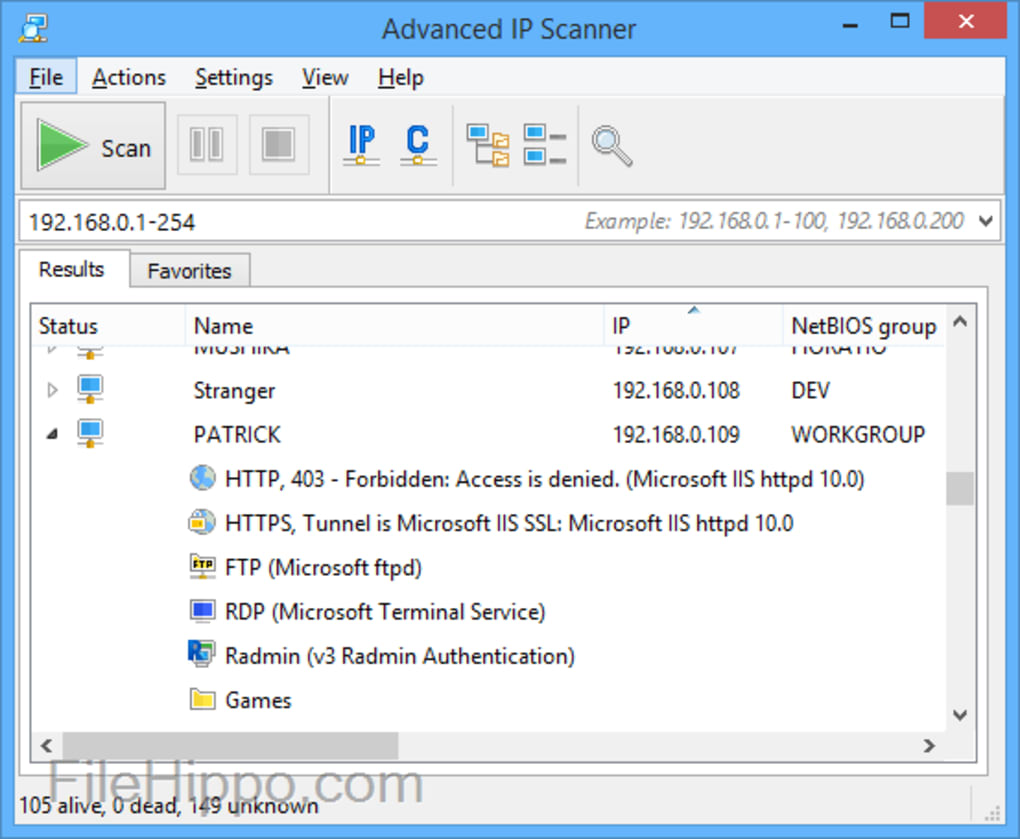
OPEN SOURCE IP SCANNER PATCH
Assists with patch management and quick vulnerability repair.Provides visibility into the security status of specific network hosts.Identifies vulnerabilities in the operating system, software, and settings of the host.Most enterprises that manage hundreds, if not thousands, of endpoints will discover that standalone tools are not practical.
OPEN SOURCE IP SCANNER INSTALL
It is necessary to install a scanner on each host that will be checked. This scan does not use any network connections and is the most time-consuming of the host-based vulnerability scans. They examine the host’s system and apps for weaknesses.

OPEN SOURCE IP SCANNER SOFTWARE
Agentless: Agentless scanners do not require any software to be installed on the target machine.One disadvantage of agent-server scanning is that the agents are bound to specific operating systems. In general, agents collect data in real time and transmit it to a central management system. The agent does the vulnerability scan and sends the results to a central server for analysis and remediation. The agent gathers information and connects with a central server, which manages and analyzes vulnerability data. Agent-Server: The scanner installs agent software on the target host in an agent-server architecture.These scans can be agent server-based, in which an agent is deployed on the target host agentless, in which no agent is required or standalone, in which the scanning capabilities are self-contained. Host-based vulnerability scanning is aimed at evaluating vulnerabilities on specific hosts within an organization’s network. Bottom Line: Types of Vulnerability Scans.Choosing Which Type of Vulnerability Scan to Run.What’s the Difference Between Authenticated & Unauthenticated Vulnerability Scans?.By understanding these distinctions, you can improve your overall cybersecurity defenses and harden your systems against potential threats. In this article, we’ll delve into various types of vulnerability scans, explore their benefits, outline the ideal scenarios for running each type, and list the best vulnerability scanning tool to use for each type of scan. Vulnerability scanning is critically important for identifying security flaws in hardware and software, but vulnerability scanning types are as varied as the IT environments they’re designed to protect. We may make money when you click on links to our partners.

ESecurityPlanet content and product recommendations are editorially independent.


 0 kommentar(er)
0 kommentar(er)
